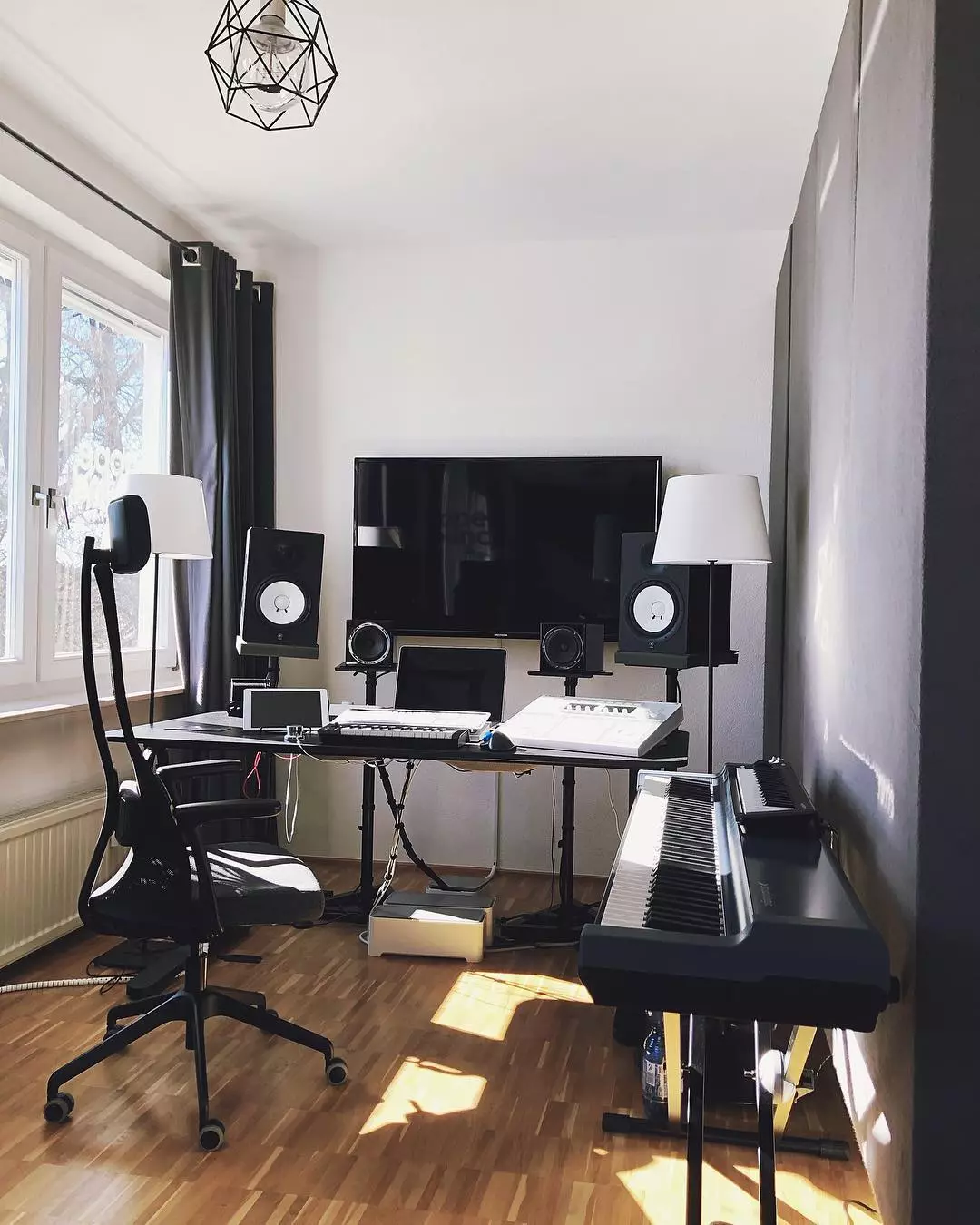
Crafting the Perfect Home Studio: A Guide for Aspiring Artists
by August 6, 20231. Choose the Right Space
Select a quiet room with minimal outside noise. If possible, avoid rooms with a lot of windows or hard surfaces, as these can cause unwanted reflections and echo. The size of the room also matters; while a larger room can provide a more open sound, a smaller one might be easier to treat acoustically.
2. Soundproofing is Key
To achieve the best sound quality, invest in basic soundproofing. This can include bass traps, acoustic panels, and diffusers. While foam panels are affordable and easy to install, they primarily address mid to high frequencies. For a room with better bass response, consider adding bass traps in room corners.
3. Selecting the Right Equipment
- Microphone: Invest in a quality condenser microphone for vocals and acoustic instruments. Dynamic mics can also be useful for certain applications like recording guitar amplifiers.
- Audio Interface: This device will convert your microphone’s analog signal into a digital one for your computer. Ensure it has phantom power if using a condenser microphone.
- Headphones & Monitors: A closed-back headphone is essential for recording, while studio monitors will give you a clearer picture during the mixing phase.
- Digital Audio Workstation (DAW): This software is where you’ll do your recording, editing, and mixing. Popular options include Pro Tools, Logic Pro X, and Ableton Live.
4. Organizing the Studio
Maintain a clean and organized workspace. Invest in stands for your mics, monitors, and instruments. This not only helps in efficient workflow but also reduces the risk of accidents.
5. Continuous Learning
The gear is only part of the equation. Invest time in learning how to use your equipment, understand recording techniques, and explore your DAW’s features. Online tutorials, courses, and forums can be invaluable resources.
In Conclusion
Setting up a home studio is a journey, not a destination. As you grow and evolve as an artist, your studio needs might change. Embrace the process, experiment with your setup, and most importantly, never stop creating. Remember, it’s not just about the equipment, but how you use it. With passion and practice, your home studio can become the birthplace of your next musical masterpiece.









Leave a comment